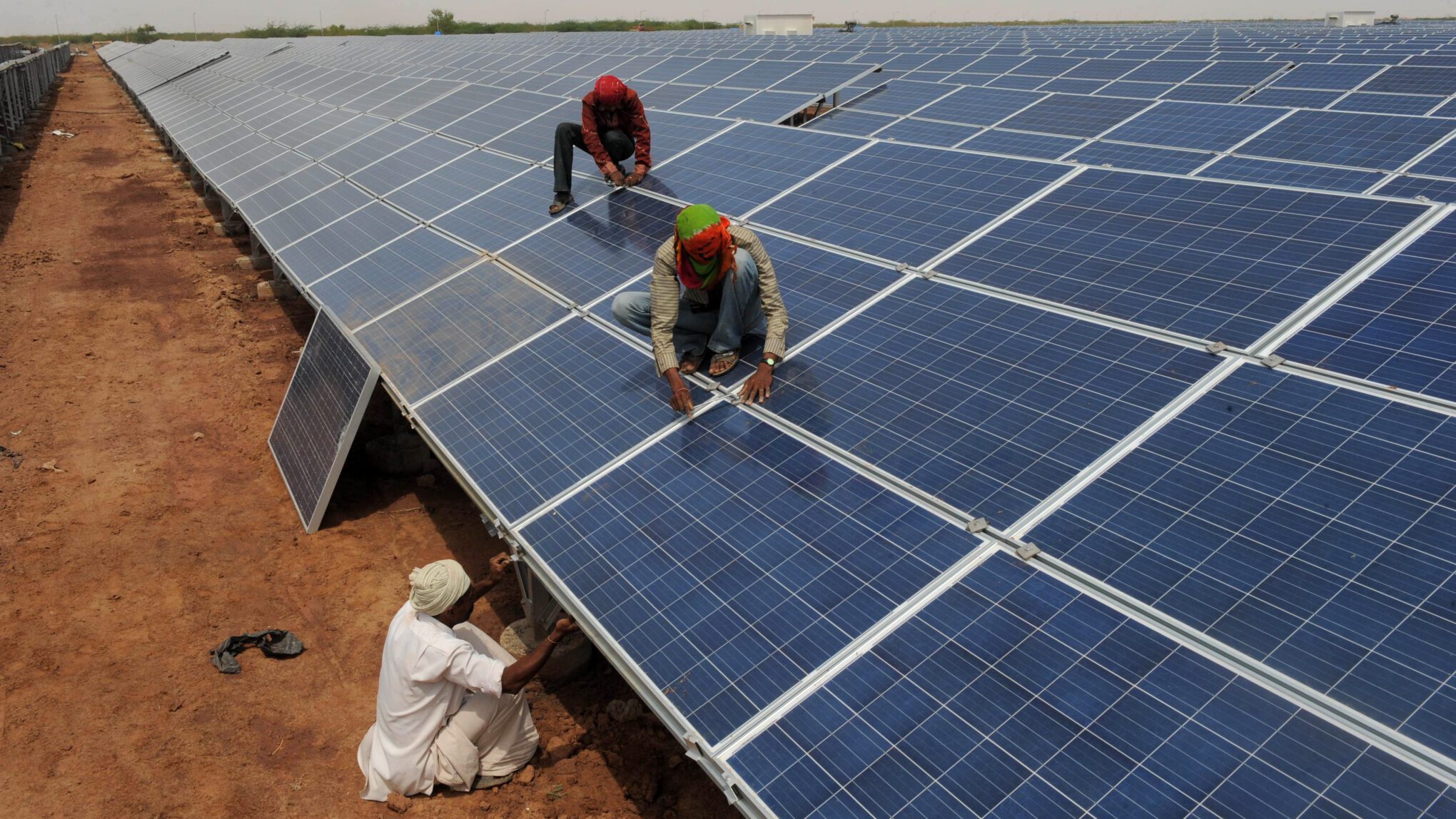The last two years witnessed a big boom in China’s global solar cells and modules exports, mainly to feed India’s sudden demand spurt. Why is the government abruptly pushing a gigantic solar power generation programme, without simultaneously strengthening its domestic solar cells, panels, and modules production facilities? Should such large investments in solar power depend on unreliable equipment supplies from China, Taiwan, and Malaysia? What about the security implication? Here’s an analysis, for Different Truths.
How well is India ready to fulfill its highly ambitious solar power generation programme — from the current level of only around 15,000 MW, or 15 gigawatts, to 100,000 MW just within the next four years? To be honest, it is impossible to achieve such a target unless the country is ready to spend billions of dollars on equipment import, mostly from China. At current prices, the country will require to spend Rs.500,000 crore or so to reach the solar power generation target by 2022. Presently, the domestic solar equipment manufacturing industry accounts for only around 15 percent of solar cells and modules supplies. The rest are being imported. Given time, the equipment industry should be able to meet a substantial portion of solar power generation requirement. The sudden and impractical solar generation programme will lead to import of solar panels worth $42 billion by 2022. The last two years witnessed a big boom in China’s global solar cells and modules exports, mainly to feed India’s sudden demand spurt. Why is the government abruptly pushing a gigantic solar power generation programme, without simultaneously strengthening its domestic solar cells, panels, and modules production facilities? Should such large investments in solar power depend on unreliable equipment supplies from China, Taiwan, and Malaysia? What about the security implication?
In a way, India’s unplanned solar power expansion is following the path of its sudden digital expansion with imported equipment, from cell phones, POS machines to fibre optics and others. India, the world’s second-largest user of cellphones, does not manufacture even the basic memory chips. According to India’s Director General of Safeguards (DGS), Customs, the country’s annual manufacturing capacity for solar cells is good for only around 3 gigawatts as against the desired requirement of 20 GW per year. The DGS said India’s solar equipment imports jumped from 1,271 MW in 2014-15 to 6,375 MW in 2016-17. During this fiscal, imports are pegged at 9,474 MW as compared to domestic equipment production of 1,164 MW. “The growth rate of such imports as a percentage of the domestic production was a remarkable 1,371 percent during the intervening year 2015-16.” China’s solar equipment exports to India constituted a paltry 1.52 percent of its total global exports during 2012. This increased to 21.58 percent during 2016. In the first half of 2017, China’s exports to India increased to a staggering 38.77 percent of its total exports while its exports to EU and the US shrunk to just 5 percent (of its total exports). Such a situation forced at least five domestic manufacturers — Mundra Solar PV Ltd, Indosolar Ltd, Jupiter Solar Power Ltd, Websol Energy Systems Ltd and Helios Photo Voltaic Ltd — approach the government seeking an imposition of ‘safeguard duty’ on imports for their survival. A DGS recommendation to the finance ministry in January said solar cells are “being imported into India in such increased quantities and under such conditions so as to cause or threaten to cause serious injury to the domestic industry manufacturing like or directly competitive products.” The existing “critical circumstances” justify the immediate imposition of a provisional safeguard to save local units from further serious injury, which would be difficult to repair in case the safeguard measure is delayed, it said. India proposed to levy a 70 percent safeguard duty on import of solar power equipment from countries like China for a specific period to protect domestic industry from “serious injury”.
While China is trying its best to influence WTO against India’s so-called ‘domestic content requirement’ rule for solar projects, the India government should draw inspiration from the latest US protective import duty on steel and aluminum, to safeguard its own manufacturing industry. The US move came days after the Department of Commerce’s Section 232 national security reviews of steel and aluminum, where it was recommended a tariff of at least 53 percent on all steel imports from 12 countries — Brazil, China, Costa Rica, Egypt, India, Malaysia, Russia, South Korea, South Africa, Thailand, Turkey, and Vietnam. India is now believed to have begun to legally examine the US action imposing higher duties on steel and aluminum imports to check if countries are free to use domestic laws to raise taxes to secure their local industry. Meanwhile, the government plans to amend bidding norms for pass-through of duties on solar modules to de-risk the projects, Power Minister R K Singh said. The proposal comes amid regulatory uncertainty in India’s solar industry as it awaits key decisions on safeguards and anti-dumping duties on solar imports from China, Malaysia, and Taiwan.
Honestly, India should go slow on its solar power generation programme until its domestic equipment manufacturing industry is able to substantially catch up with the demand of the solar power generation sector. Also, India should not ignore its potential of conventional thermal generation until it is fully ready to utilise the non-conventional and renewable resources. The country’s coal production and consumption is a fraction of those of China’s and much less than the USA’s. Companies such as Coal India and NTPC Limited have still good potential to grow to meet India’s rising energy demands. One should not forget that India’s renewable energy resources are neither unlimited nor good enough to meet its burgeoning energy demands. India is said to have an estimated renewable energy potential of about 900 GW from sources such as wind – 102 GW (at 80-meter mast height); small hydro – 20 GW; bio-energy – 25 GW; and 750 GW solar power, assuming three percent wasteland availability. No one is too sure about the extent of the commercial viability of such potential estimates. More importantly, the non-conventional energy capacity should be linked with local input production capacity, especially of machinery and equipment.
Nantoo Banerjee
©IPA Service
Photo from the Internet





 By
By

 By
By
 By
By